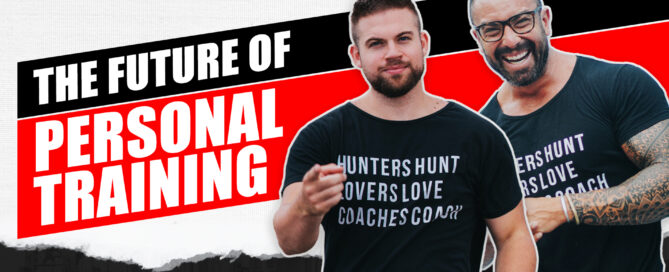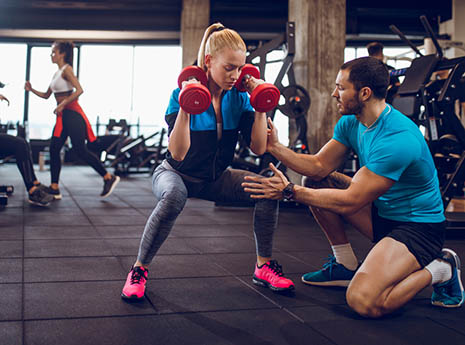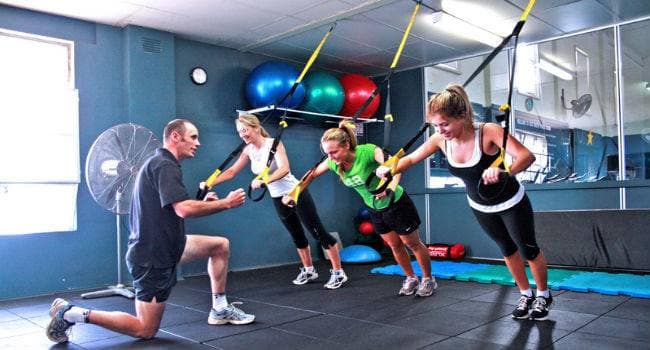
Athletic trainers, who are specialists in treating and rehabilitation for athletes, are health care professionals. While it is not a glamorous job, many people watch them closely. These are some of the most prominent athletic trainers in the world. Dean Kleinschmidt is not the only one. Sam Lankford, Claude Monks and Doc Knight are also athletic trainers.
Dean Kleinschmidt trains as an athlete.
Dean Kleinschmidt was a former head coach for football at IU. He is the head athletic trainer for the Detroit Lions and the coordinator of athletic medicine for the Detroit Pistons. Dean Kleinschmidt was the Washington Redskins' head athletic trainer from 2001 to 2002. He was previously the administrator of the East Jefferson General Hospital Wellness Center, Metairie, La. From 1969 to 1999, he served as a member the New Orleans Saints' Training Staff. During his tenure there, he was named the team's assistant head athletic trainer and then was promoted to head athletic trainer at the age of 24.
Sam Lankford is an athletic trainer
Sam Lankford is known as the "Queen" of College Athletic Training. He has a long history of serving his profession. He was the co-author of the Kentucky Athletic Trainers Association's Hall of Fame. In 1983, he was also named Official Athletic Trainer of Year. He was also on the 50th Anniversary Taskforce by the National Collegiate athletic Trainers' Association (NCAA). In addition, he was elected as the first Chair of NATA Certification Committee. He moved to Middle Tennessee in 2005 after he retired.
Claude Monks was an athletic trainer
Claude Simons (the "Big Monk") is a well-known figure in intercollegiate athletics. He played for the Tulane Green Wave in football and was later appointed head coach of several sports at Tulane. Monks also served as the president of Southern Amateur Athletic Union. He was a member of the profession for over six decades and has had many notable achievements.

Doc Knight was an athlete trainer
Doc Knight was an athlete trainer at the University of Mississippi. He also served as head football coach for almost 28 years. He graduated from Springfield College in 1935 and then went to study physical education at Bellevue Hospital in New York City. Knight was a trainer, a physical education instructor and an assistant track coach at many institutions during his career. In addition, he was inducted into the NATA Hall of Fame in 1969.
Jack Redgren was an athlete trainer
Jack Redgren was a nationally recognized athletic trainer. He was born in Winnebago, MN, and graduated from the University of Montana in 1964. He served in 1965-67 in the United States Army and went on later to complete his physical therapy education in Rochester, MN at the Mayo Clinic School of Physical Therapy. He went on to work for Vanderbilt University for 10 years before moving to private practice. He was also a Member of the Southeast Athletic Trainers Association Hall of Fame.
Sandy Sandlin was an athlete trainer
Sandy Sandlin was an inspiration for all athletic trainers, from high school to college, throughout her long career. From 1938 to 1975 she was the University of Tennessee's Head Athletic Training. She was also the Chattanooga Lookouts’ traveling secretary during her tenure. In 1976, she retired from UTC and became an athletic trainer at the Baylor School's baseball team.
Tad Gormley trained athletes
Tad Gormley, who is a native Massachusettsian, was an athletic trainer at Boston's Marathon in 1904 & 1906. He was later a track coach and trainer at many universities, including Tulane University and LSU. He was also an official with the U.S. Olympic team's track team in 1932. Later, he became the stadium superintendent. His weekly open track meets are known as The Gormley Games.

FAQ
Which workout is the most effective for men
It depends on what you're looking for. Cardio exercises are great for anyone looking to lose weight.
However, strength training can be beneficial if you only want to build muscle mass. It increases lean mass.
Both types of exercise have proven benefits if you want to improve your overall health.
I recommend HIIT (or sprint interval training) if you want to be fit quickly. This type helps you burn fat quickly, by increasing your metabolism. It also boosts your endurance to continue training even when you feel tired.
What is the best exercise routine to build muscle?
Two main types of exercises are required for building muscle mass. These are the isolation exercises as well as compound movements. While compound movements focus on a single muscle, isolation exercises are focused on specific muscles.
The best way to improve your workouts is to choose exercises that challenge all your major muscle groups. This ensures you're always pushing yourself during your workouts.
MyFitnessPal is an app that allows you to track your activities. You can log everything, from calories burned to weight lifting. You can also create customized meal plans based upon your goals.
What dietary supplement is best for weight loss?
Losing weight requires both diet and exercise. Some people find that certain supplements are helpful.
Research suggests that omega-3 fats may aid in weight loss. Omega-3s are essential fats that are important for brain function and cell membrane integrity. They are found in fish like salmon, tuna, shrimp and cod liver oil.
Green tea is being studied for its potential benefits in weight loss. Green tea is rich in catechins, antioxidants which may boost metabolism and aid weight loss.
Statistics
- According to the American Academy of Dermatology (AAD), men over 50 are at a heightened risk of developing it. (healthline.com)
- Are You One of the 20% of Guys (mh.co.za)
- An estimated calorie range for moderately active adult males falls between 2,200 to 2,800 calories per day, depending on age. (eatright.org)
- 10 pounds in a month is likely during a lean bulking phase, especially for beginners. (muscleandstrength.com)
- The PRS enabled risk stratification for overall prostate cancer and lethal disease with a four-fold difference between men in the highest and lowest quartiles (HR, 4.32; 95% confidence interval [CI], 3.16-5.89). (pubmed.ncbi.nlm.nih.gov)
External Links
How To
How can I burn fat while exercising?
Exercise burns calories through increased metabolism and oxygen consumption.
You'll lose weight safely if you exercise at moderate intensity.
These are the top tips for burning fat while you exercise.
-
Cardio exercises include walking, running, swimming, cycling, running and jogging.
-
Exercise for 30 minutes three times per week.
-
Add strength training to your workouts if you are looking to lose more weight.
-
Avoid doing intense exercises. You can build muscle without having to lose muscle tissue.
-
Drink plenty of water during exercise. Water helps flush out toxins and keep your body properly hydrated.
-
After working out, drink low-fat protein shakes. Protein shakes can help boost energy and repair muscles.
-
So you don’t feel hungry, eat smaller meals throughout your day.
-
Don't skip breakfast! Skipping breakfast can cause you to feel tired and sluggish.
-
Take care to your mental well-being. Stressful situations can affect your metabolism.
-
Keep a positive attitude. Studies show that people who believe they are overweight gain more weight then those who think they are attractive.
-
Get enough sleep. Lack of sleep makes it harder to burn fat.
-
Be active. Keep moving every hour.
-
Maintain a healthy diet. You will feel fuller longer if you eat right.
-
Find relaxation methods. An anxious mind won't allow your body release stress hormones, which can lead to the destruction of muscle tissue.
A balanced diet will provide all nutrients that are necessary for growth.
Consider eating six small meals daily instead of three big ones. This allows your body time to digest what you've eaten.
You need about 500 milligrams of calcium daily to maintain strong bones. Calcium is found in dairy products like yogurt, fortified milk beverages, orange juices, cereals and bread.
Calcium is found in leafy green vegetables and beans, tofu as well as nuts, seeds, cheese, and seeds.
Vitamin D is necessary for the body to absorb calcium. It's found in fatty fish, egg yolk, and some fortified foods.
Vitamin E is essential for skin health. Vitamin E can also be found in vegetable oil, wheat germ oils, peanuts as well almonds, sunflower seeds and corn.
Your body needs zinc for normal immunity function and wound healing. Zinc is found in seafood, oysters legumes meats, whole grains, whole grains and meats.
Zinc deficiency can cause fatigue and loss of appetite. It can also lead to depression and impaired immunity.
Sugar intake can lead to insulin resistance which causes blood glucose levels to rise. Insulin resistance leads to weight gain.
High levels of free radicals can lead to insulin resistance. Free radicals are molecules with unpaired electrons that damage cell membranes and other parts of the body.
The main sources of free radicals are food additives.
Free radical damage can cause cancer, heart disease and diabetes, as well as arthritis, asthma, and other diseases.
A well-balanced diet rich in antioxidants is the best way for you to avoid free radical damage. Antioxidants protect against oxidative damage.
Vitamin C is found in citrus fruits and beta carotene is found in carrots.
Selenium, copper as well as manganese and zinc are some other antioxidant nutrients.
Selenium is known to protect cells from the oxidative damage that free radicals can cause. Selenium may be found in Brazil nuts as well tuna, liver and kidneys. It can also be found on shrimp, cod, turkey, beef lamb, pork, chicken, and other foods.
Copper protects eyes, brain, lungs and red cells. Copper can be found in shellfish and poultry as well as meat and organ meats.
Manganese forms an essential part of bone structure. Manganese may be found in brown rice or spinach, bananas and prunes as well raisins, oatmeal and lentils.
Zinc is required for normal growth, reproduction and wound healing. Zn is found in lean meats, poultry, white fish and eggs.